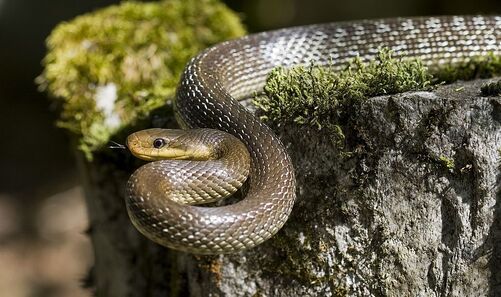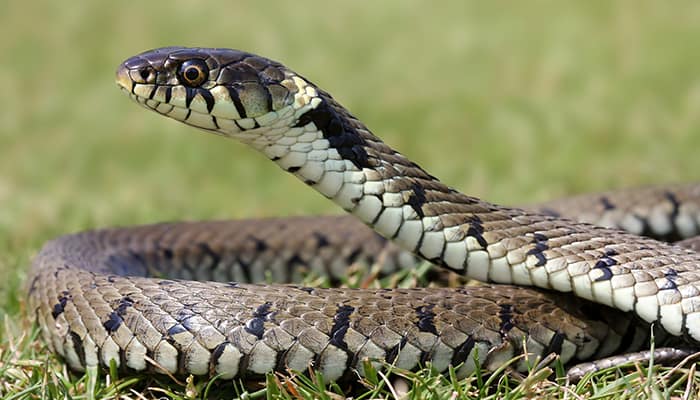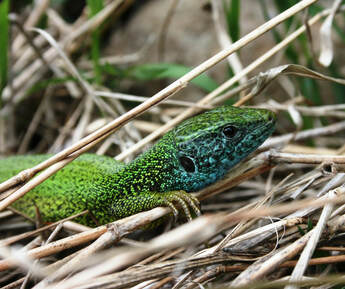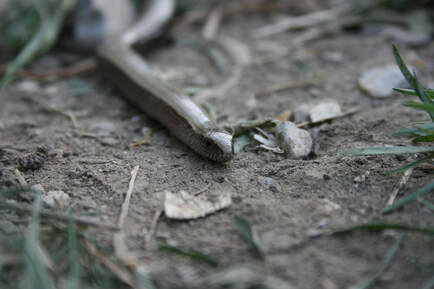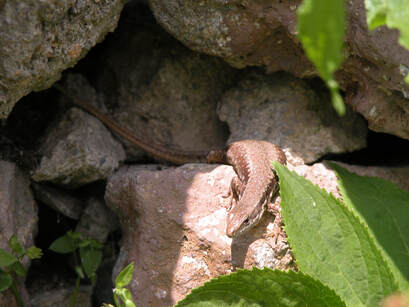Aesculapian Snake - Zamenis longissimusSize
Growing almost up to 2 metres (6.6 ft) in length, it is among the largest European snakes, similar sized to the four-lined snake Venom They are non-venomous but will almost always bite if felt threatened. I have been bitten over fifty times and I can say that it doesn't hurt. Habitat The Aesculapian Snake prefers forested, warm but not hot, hilly or rocky habitats with proper isolation and varied, not sparse vegetation. They can also be commonly found in old abandoned buildings where there are lots of rats. I mainly see them under straw bales. Diet Their main food source are rodents up to the size of rats and other small mammals such as shrews and moles. They suffocate their prey by constriction, though smaller mouthfuls may be eaten alive without constriction. Juveniles mainly eat lizards and arthropods. Breeding Breeding occurs annually after hibernation in spring, typically from mid-May to mid-June. In this time the snakes actively seek each other and mating begins. Females usually lay around 5-11 eggs per clutch, in a moist, warm spot where organic decomposition occurs, usually under hay piles. |
Grass Snake - Natrix natrixSize
They are quite a small species of snakes growing up to an average of 70-90cm long (Although I have found the largest one ever recorded in Bulgaria, which was an epic 1.83m long, you can see the snake on my YouTube channel Balkan Herping Venom The Grass Snake Is a non-venomous water snake species. They do not bite, but when felt threatened they will play dead and produce a horrible smelling liquid. Habitat It's found all over Europe near lakes, rivers, marshes and anywhere where there is water. Diet They almost always feed on amphibians mainly frogs and young snakes will eat tadpoles. Breeding They breed in April, and lay 10 to 40 eggs in one batch. |
European Green Lizard - Lacerta viridis |
Slow Worm - Anguis fragilis |
|
Size
It's one of the largest Bulgarian lizards growing up to 40 cm long including the tail. Males have much larger heads. They are aggressive and will give a nasty bite if felt threatened. Habitat The European Green Lizard lives on the ground and in low, dense vegetation and likes to bask in the sun, early and late in the day. Will usually be seen near thorny bushes where it can hide quickly. Diet It feeds mainly on insects and other small invertebrates but it also sometimes takes fruit, birds eggs, fledglings, small lizards and even mice. Breeding In spring, the female lays six to twenty eggs which hatch in two to four months. Newly hatched juveniles are pale brown. |
Size
Slow Worms are legless lizards and are one of the largest lizard species in Bulgaria growing up to 50 cm long. They are Habitat Slow-worms can be found in heath lands, tussocky grasslands, woodland edges and gardens. Diet Slow worms eat mainly slow moving prey such as slugs, worms, snails as well as the odd insect and spider. Breeding The mating season for slow-worms kicks off in May and males become aggressive towards each other. Females incubate the eggs internally, 'giving birth' to an average of eight young in summer. |
Common Wall Lizard - Podarcis muralisSize
The common wall lizard is a small, thin lizard growing up to a maximum size of 10 cm long but usually smaller. Habitat Widespread over most of it's range but restricted to sheltered sunny locations. Usually found on walls with cracks in it, but will also be seen in rocky areas. Diet European Wall Lizards eat flying and ground insects such as flies and beetles along with many types of spiders. They are fast predators and have been seen jumping off the ground to catch flying insects. Breeding Females lay 2-3 clutches a year usually 6 eggs per clutch. They hatch in 6 to 11 weeks. |
This page was made by Dylan Alfrey, for more information on Reptiles and Amphibians of Bulgaria see Dylan's website Bulgarian Reptiles here and his Balkan Herping youtube channel here
|
Telephone+359988342649
|
|

